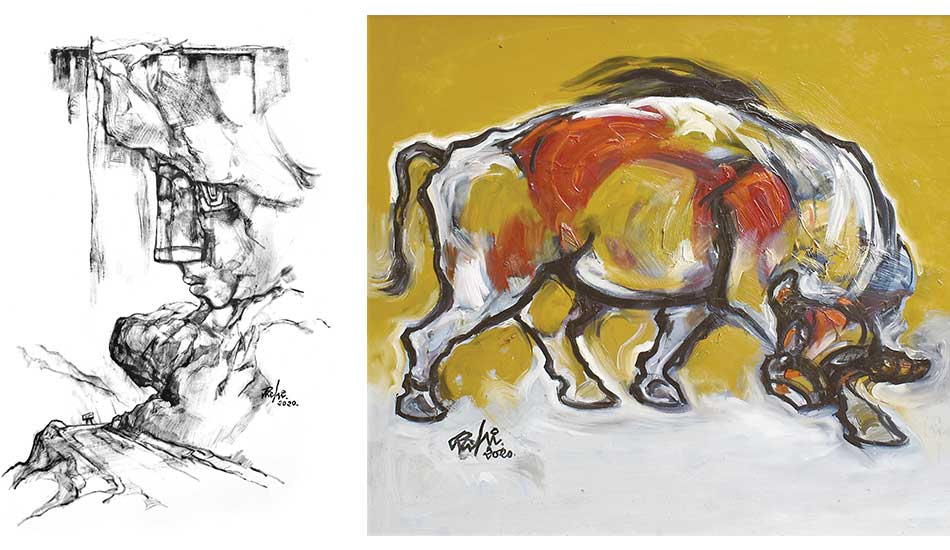ZULFIQAR ALI ZULFI’S HUES OF DUSK
- 29 Oct - 04 Nov, 2022

Cubism was a revolutionary new approach to representing reality invented in around 1907-1908 by renowned artists Pablo Picasso and Georges Braque. They brought different views of subjects (usually objects or figures) together in the same picture, resulting in paintings that appear fragmented and abstracted. Cubism was one of the most influential styles of the 20th century. It is generally agreed to have begun around 1907 with Picasso’s celebrated painting Demoiselles D’Avignon which included elements of cubist style. The name ‘cubism’ seems to have derived from a comment made by the critic Louis Vauxcelles who, on seeing some of Georges Braque’s paintings exhibited in Paris in 1908, described them as reducing everything to ‘geometric outlines, to cubes’. By breaking objects, the artists aimed to show different viewpoints at the same time and within the same space and so suggest their three dimensional form. In doing so they also emphasised the two-dimensional flatness of the canvas instead of creating the illusion of depth.

One extremely skilled artist in this genre of art is the recipient of the President’s Pride of Performance, Mansoor Rahi, who grabbed the attention of various artists for his excelled craft in the Cubism genre. The prodigious artist in an exclusive conversation with MAG sheds light on his 70 year long association with the art form that he not only loves but is also very passionate about. Art’s capacity to shock remains for some a strong source of its contemporary appeal. We are conscious that, individually and collectively, we may grow complacent; art can be valuable when it disrupts or astonishes us. Rahi’s paintings and drawings depict abstraction yet the visual imagery remains representational, which marks the level on which he is artistically. He, since the age of four, was inclined towards this craft and is still very much into creating paintings of substance which not only create a mood of innovating new forms and illusion of values but also open a vision of free expression with spontaneous use of brush strokes. While viewing Rahi’s work, one is struck by the prevalent dichotomy. Conventionality as well as non- conformity to Cubism co-exists within his artworks.
Rahi has done graduation in Fine Arts from Dhaka Art College in 1963. The artist throws it back to the past and notifies that his maternal side of the family was gifted and blessed with immense talent of arts and craft. Also, he was of the opinion that his parents were the most supportive ones who encouraged him to excel in every walk of life. His latest collection of paintings was displayed at the Clifton Art Gallery, which according to him was mainly done in ‘Cubical Device’ (decorative manner). The artist considers the human figures as his center of imagination and he generally takes his work inspirations from different human postures, when it comes to present his craft in the form of paintings. In Rahi’s work, the subject is easily perceived, therefore the intellectual process begins after its recognition, unless his intention is based on a purely visual aesthetic in which case the cerebral is rejected in favour of the physicality of his paintings. The technique that the artist has used to make this recent collection of paintings was mainly with oil paints and the purpose was to track Cubism. •
COMMENTS